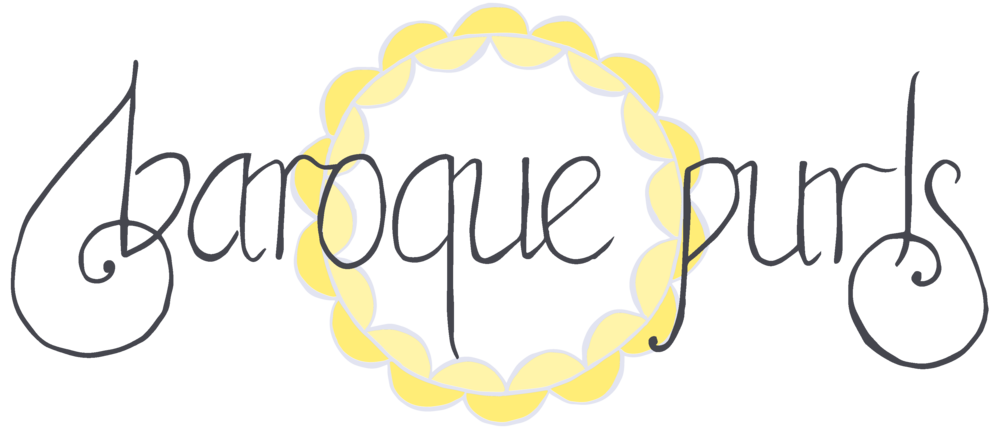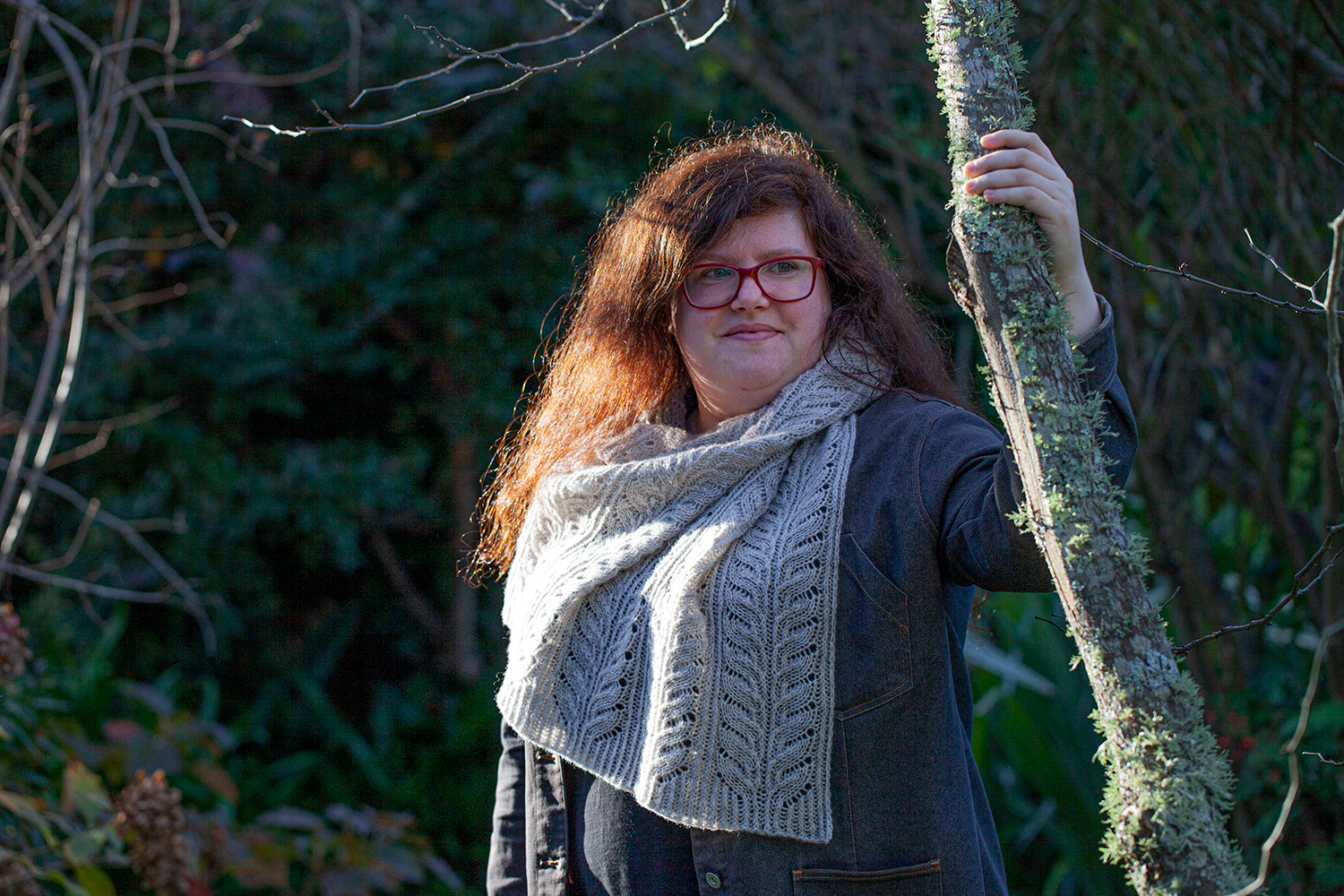Lace knitting is one of my very favourite kinds of knitting. You can use its basic building blocks of yarn-over holes, various directional decreases, and knit and purl texture to create so many completely different kinds of fabric, from exceptionally delicate and ornate to chunky and geometric. There’s so much scope for creativity!
Most of my lace designs feature stitch patterns with ‘rest rows’, i.e. without increases or decreases on the wrong side (WS) rows (or similarly, every second round in a hat or cowl worked in the round). But two of my recent lace creations, the Beanstalk Shawl and Ensata Scarf, require working increases and decreases on every row. This is where the purled decreases p2tog and ssp come in, which are worked on the WS and look just like k2tog and ssk when viewed on the right side (RS) of the fabric. P2tog is the more straightforward of the two, while ssp involves a few steps.
The methods:
P2tog:
purl the next 2 stitches together
(1 stitch decreased, right-leaning on RS)
Ssp:
slip the next 2 stitches one-by-one knitwise
slip them back to the left-hand needle
purl them together through the back loops
(1 stitch decreased, left-leaning on RS)
Here are the moves in video form - I’m working Row 2 of the Beanstalk Shawl’s Leaf Stitch pattern. In addition to demonstrating p2tog and ssp, this video also shows how I purl through the back loop using my left index finger to open up the stitch as I insert the right-hand needle.
Find out more about my Beanstalk Shawl pattern, including Ravelry and Payhip purchase options. My Ensata Scarf is available on Ravelry and on Brooklyn Tweed’s website.


